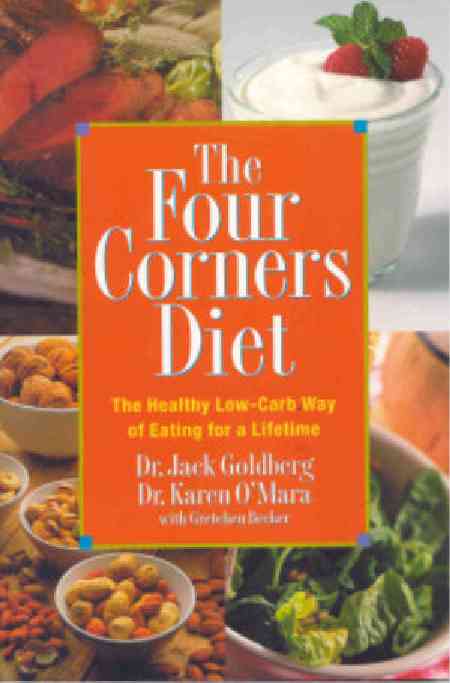
Yosemite Falls
This newsletter keeps you up-to-date with new articles, Web pages, and books that I have written about diabetes.
- I list and link most of these on my Diabetes Directory at www.mendosa.com/diabetes.htm and in the site’s menu.
My recent contributions are:
- Cholesterol, Diabetes, and the Statins
Most people with diabetes also have high cholesterol and high blood pressure. These are three of the components of the so-called Syndrome X or metabolic syndrome. Each condition individually is a risk factor for heart disease, and together they are particularly dangerous.That’s probably why earlier this year the American Diabetes Association set an even harder goal for LDL cholesterol. The organization says that our goal should be less than 100 mg/dl. It had been 130 mg/dl and remains at that level for people who don’t have heart disease or diabetes.
The medical establishment’s drug family of choice to treat high cholesterol are the statins. This includes six drugs currently on the market with a generic name ending with statin: atorvastatin (Lipitor), fluvastatin (Lescol), lovastatin (Mevacor, Altocor), pravastatin (Pravachol, Selektine), rosuvastatin (Crestor), and simvastatin (Zocor).
These are truly remarkable drugs as long as you don’t suffer any of their side effects. I do. Therefore, in order to get my high cholesterol levels under control I have had to search for alternatives, including a vacation at Yosemite this month. Thus the photograph of Yosemite Falls in this issue.
You can read the complete article online at http://www.mendosa.com/cholesterol.htm.
Book Review:

A Diet Both Low Carb and Healthy
- The Four Corners Diet
The dictionary definition of “Four Corners” is “A location in the southwest United States where the boundaries of four states — Colorado, New Mexico, Arizona, and Utah — meet. It is the only point in the United States where such a junction occurs.”The Four Corners area is truly the Wild West. The people who live there are probably big fans of 18 ounce steaks and baked Russet Burbank potatoes.
No wonder I was puzzled when a book called The Four Corners Diet hit my desk. I know one of the co-authors, Gretchen Becker, and know that her diet recommendations are much more sound than steak and potatoes. A year or two ago she told me that the diet she liked best was a 1999 book called The GO-Diet by Jack Goldberg and Karen O'Mara, after whom it gets its name from the first initials of their last names.
While I never investigated the GO-Diet, Drs. Goldberg and O'Mara have now updated and enlarged it with their Four Corners Diet. Gretchen made major contributions to the new book, including writing all of Chapter 11, “Type 2 Diabetes,” which includes a cogent explanation why the American Diabetes Association holds to its high carb recommendations. She also wrote some 10 sections headed “If You Have Diabetes” and prepared the nutritional analyses of all of the recipes, most of which Dr. O'Mara devised.
The Four Corners Diet is really a diet with four cornerstones or perhaps four legs. It is not just a low-carb diet, but that certainly is one of its cornerstones. This diet is not as restrictive at those of the late Dr. Robert C. Atkins and Dr. Richard K. Bernstein. The low-carb cornerstone in the book currently under review is up to 50 grams of net carbs per day. The induction period of Dr. Atkins’ diet lasts two weeks and allows only 20 grams of carbohydrate per day, after which the weight loss phase allows up to 40 grams. Dr. Bernstein’s diet would allow at most 42 grams of carbohydrate per day.
The second cornerstone is monounsaturated fat, which should comprise half of the fatty acids you eat. Saturated fat should be limited to 40 grams per day. Transfatty acids should be eliminated as much as possible. Only in a sidebar later in the book do the authors recognize the need for omega-3 fatty acids, a class of the polyunsaturated family.
The third cornerstone is fiber. This is a high fiber diet with 25 to 30 grams per day.
Few people nowadays would argue with the second and third cornerstone. While a low-carb diet remains controversial, it is moving closer to the mainstream every day.
But the fourth cornerstone gives greater emphasis to certain “Pharmafoods” than any other diet that I am familiar with. This means foods that have health benefits beyond the vitamins and minerals that they contain.
To me the most exciting section is the first group of pharmafoods, which the book calls “Probiotic Foods.” These foods are principally buttermilk, yogurt, and kefir. They all contain friendly bacteria that antibiotics and a high-carb diet can destroy.
The “Other Pharmafoods” include the usual greens, tomatoes, the onion family, and seeds and nuts (including peanut butter). I was pleasantly surprised to see tea, coffee, red wine listed here.
This is a realistic and sensible diet for anyone trying to lose weight and for anyone with diabetes, whether or not weight loss is an issue. It is jam-packed with great information.
I was particularly impressed with the suggestion that a common reason for slow weight loss is drug interference, including nonsteroidial anti-inflammatories like aspirin and ibuprofen. In email correspondence with Dr. Goldberg he clarified that the book was referring to high doses. I take one aspirin a day for its supposed blood-thinning properties. Dr. Goldberg doesn’t believe that amount will stimulate cortisol production, which influences insulin action.
Lastly, The Four Corners Diet includes a useful chapter on “Menu Suggestions” and a generous number of exciting recipes. I enjoyed the “Indian-Style Eggplant” and the “Chocolate Almond Ricotta Dessert.” Not only are these tasty low-carb dishes, but they are also easy to make, satisfying our basic criterion of having fewer than six ingredients. Another valuable recipe tells how to make kefir at home; for more of which see the next item.
By Dr. Jack Goldberg and Dr. Karen O'Mara with Gretchen Becker, The Four Corners Diet is an imprint of Avalon Publishing Group’s Marlowe & Company in New York. This 255-page trade paperback lists for $14.95.
Research Notes:
- Kefir
The section of The Four Corners Diet, which I review above, that changed my life was about a “Probiotic Food” called kefir. I knew that kefir was something like a thick liquid yogurt, but had no idea how beneficial it is or that it actually has many fewer carbs than the label indicates.The only kefirs that I had ever drunk were the berry-flavored varieties that are heavily loaded with sugar. That’s not what Dr. Goldberg recommends. Look for the hard-to-find plain varieties, he says.
I did that and found two excellent brands in my local natural foods store: Lifeway Foods Inc. from Morton Grove, Illinois, and Helios Nutrition Ltd. from Sauk Centre, Minnesota.
Dr. Goldberg recommends drinking 8 ounces a day. My only problem is limiting how much I drink because I like the taste so much!
Earlier, I would have been concerned with the amount of net carbs that even an 8 ounce glass contains. According to the Nutrition Facts panel on the Plain Helios kefir a cup contains 11 grams of net carbs, and the Plain Lifeway kefir has 12 grams.
But the bacteria that convert the milk to kefir do so by converting the milk sugar, lactose, into lactic acid. Dr. Goldberg tells me that only 1 percent of the lactose from the milk remains in Lifeway’s kefir.
“You can subtract 1 gram of carbohydrate for each ounce of these probiotic foods you eat,” the book states. “Thus, for a standard 8-ounce container of plain yogurt [and also kefir], which usually says it has about 12 grams of carbohydrates, you need to count only 4. This is not just speculation. Dr. Goldberg has actually measured the carbohydrate content of yogurt in his own laboratory.”
The only problem that I foresee is that all this kefir is going to get expensive pretty fast. Fortunately, kefir is even easier to make at home than yogurt, since you can make it a room temperature. The Four Corners Diet provides a detained recipe on page 210 for making kefir from regular milk and a couple tablespoons of starter per quart. Homemade kefir is just one-fourth the cost of the kefir you can buy in the store, if you make it by the gallon.
- HTML Format
I send out Diabetes Update e-mail in HTML format, which all Web browsers and most modern e-mail programs can display. HTML has live links to all the sites named in the text so that with a simple click of a mouse you can connect to the site you have just been reading about. - My Guarantee
This newsletter is free and will never include advertising. Nor will I ever sell, rent, or trade your e-mail address to anyone.
Archives:
I now send out Diabetes Update once a month. Previous issues are online:
- Diabetes Update Number 1: Diabetes Genes of December 10, 2000
- Diabetes Update Number 2: DiabetesWATCH of December 18, 2000
- Diabetes Update Number 3: Starlix of January 3, 2001
- Diabetes Update Number 4: Native Seeds/SEARCH, Tepary Beans of January 17, 2001
- Diabetes Update Number 5: Insulin Makes You Fat of January 31, 2001
- Diabetes Update Number 6: Available and Unavailable Carbohydrates of February 15, 2001
- Diabetes Update Number 7: Dates of March 1, 2001
- Diabetes Update Number 8: Quackwatch of March 15, 2001
- Diabetes Update Number 9: The Cost of Insulin of March 30, 2001
- Diabetes Update Number 10: Sof-Tact Meter of April 2, 2001
- Diabetes Update Number 11: iControlDiabetes of April 16, 2001
- Diabetes Update Number 12: Cinnamon, Tagatose of May 2, 2001
- Diabetes Update Number 13: Glycemic Index of May 15, 2001
- Diabetes Update Number 14: Eat Your Carrots! of May 31, 2001
- Diabetes Update Number 15: Glycemic Load of June 21, 2001
- Diabetes Update Number 16: Homocysteine of July 2, 2001
- Diabetes Update Number 17: Chana Dal Tips of July 15, 2001
- Diabetes Update Number 18: Lag Time in AlternativeLand of August 2, 2001
- Diabetes Update Number 19: Fiber of August 15, 2001
- Diabetes Update Number 20: How Diabetes Works of August 30, 2001
- Diabetes Update Number 21: Insulin Resistance of September 14, 2001
- Diabetes Update Number 22: Trans Fats, Honey, CU of October 1, 2001
- Diabetes Update Number 23: Pedometer Power of October 15, 2001
- Diabetes Update Number 24: Is Glycerin a Carbohydrate? of October 31, 2001
- Diabetes Update Number 25: Kill the Meter to Save It of November 15, 2001
- Diabetes Update Number 26: Protein, Fat, and the GI of December 1, 2001
- Diabetes Update Number 27: Insulin Index of December 14, 2001
- Diabetes Update Number 28: Fructose of January 4, 2002
- Diabetes Update Number 29: Aspirin of January 14, 2002
- Diabetes Update Number 30: Stevia of January 31, 2002
- Diabetes Update Number 31: Gretchen Becker’s Book of February 19, 2002
- Diabetes Update Number 32: The UKPDS of March 4, 2002
- Diabetes Update Number 33: Financial Aid of March 18, 2002
- Diabetes Update Number 34: Pre-Diabetes of April 1, 2002
- Diabetes Update Number 35: More Glycemic Indexes of April 15, 2002
- Diabetes Update Number 36: Gila Monsters of April 30, 2002
- Diabetes Update Number 37: Is INGAP a Cure? of May 15, 2002
- Diabetes Update Number 38: Native American Diabetes of June 3, 2002
- Diabetes Update Number 39: FDA Diabetes of June 19, 2002
- Diabetes Update Number 40: Diabetes Support Groups of July 1, 2002
- Diabetes Update Number 41: New GI and GL Table of July 15, 2002
- Diabetes Update Number 42: Diabetes Sight of August 1, 2002
- Diabetes Update Number 43: DrugDigest of August 18, 2002
- Diabetes Update Number 44: Hanuman Garden of September 3, 2002
- Diabetes Update Number 45: Guidelines of September 16, 2002
- Diabetes Update Number 46: Trans Fat of October 4, 2002
- Diabetes Update Number 47: Nutrition.Gov of October 16, 2002
- Diabetes Update Number 48: Our Hearts of October 31, 2002
- Diabetes Update Number 49: Our Kidneys of November 15, 2002
- Diabetes Update Number 50: A1C<7 of December 2, 2002
- Diabetes Update Number 51: Diabetes Searches with Google of December 16, 2002
- Diabetes Update Number 52: e-Patients of January 2, 2003
- Diabetes Update Number 53: Email News of January 16, 2003
- Diabetes Update Number 54: Third Generation Meters of January 31, 2003
- Diabetes Update Number 55: Hypoglycemic Supplies of February 14, 2003
- Diabetes Update Number 56: Food Police of March 1, 2003
- Diabetes Update Number 57: Vitamins of April 1, 2003
- Diabetes Update Number 58: Lancets of May 1, 2003
- Diabetes Update Number 59: Accurate Meters of June 1, 2003
- Diabetes Update Number 60: Chromium of July 1, 2003
- Diabetes Update Number 61: Traveling of August 1, 2003
- Diabetes Update Number 62: My Book of September 1, 2003
- Diabetes Update Number 63: Hot Tubs of October 1, 2003
- Diabetes Update Number 64: Home A1C Testing of November 1, 2003
- Diabetes Update Number 65: Detemir of December 1, 2003
- Diabetes Update Number 66: Erectile Dysfunction of January 1, 2004
- Diabetes Update Number 67: Acidic Foods of February 1, 2004
- Diabetes Update Number 68: Net Carbs of March 1, 2004
- Diabetes Update Number 69: Glycemic Index of April 1, 2004
- Diabetes Update Number 70: Dreamfields Pasta of May 1, 2004



